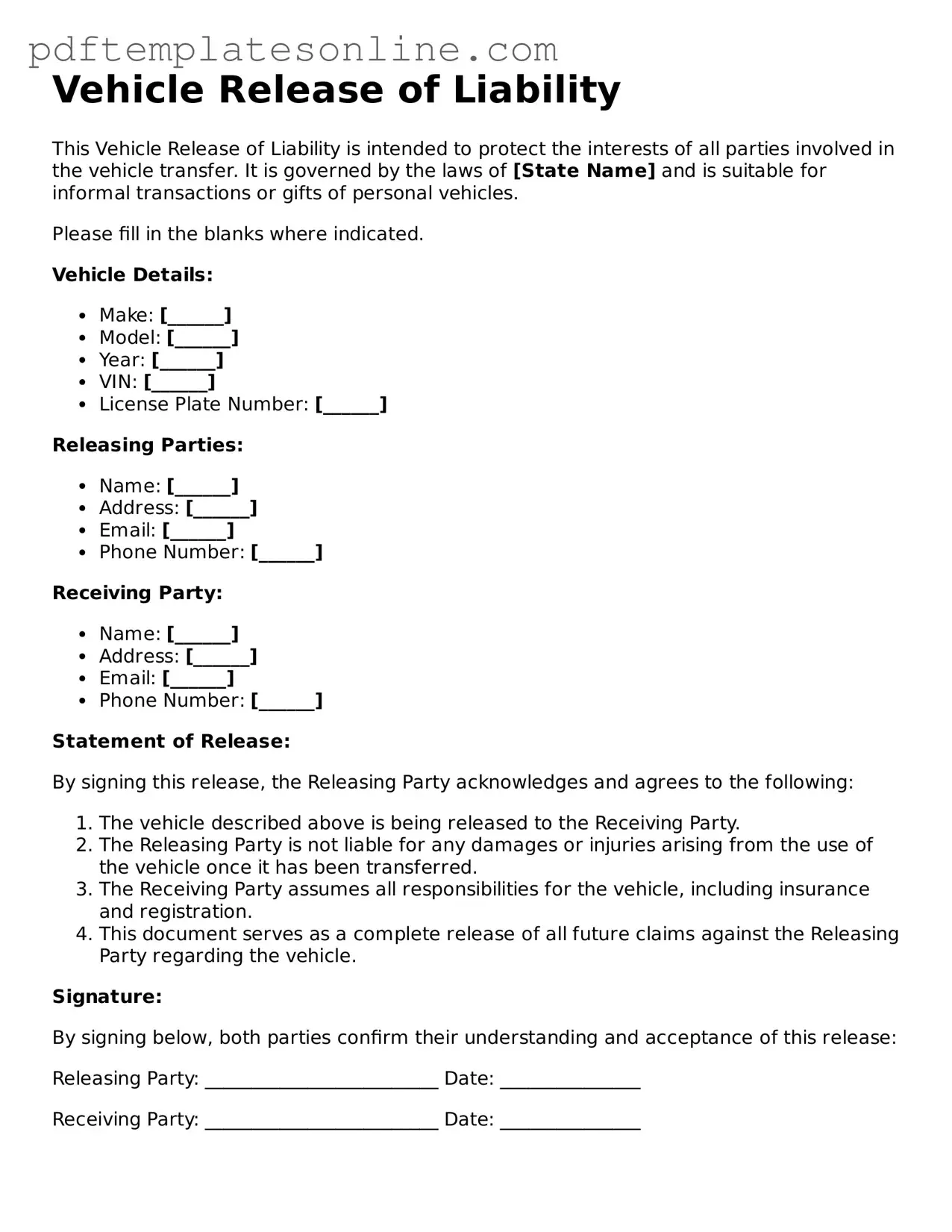When it comes to filling out the Vehicle Release of Liability form, many individuals inadvertently make mistakes that can lead to complications down the line. Understanding these common pitfalls can save time and frustration. Here are seven frequent errors to watch out for.
First, one of the most common mistakes is failing to provide complete information. It's essential to fill in all required fields accurately. Missing details, such as the vehicle identification number (VIN) or the owner's name, can render the form invalid. Always double-check that every section is filled out thoroughly.
Another mistake often made is neglecting to sign the form. A signature signifies agreement and acknowledgment of the terms outlined in the document. Without it, the form may not hold any legal weight, leaving both parties exposed to potential liability.
Many people also overlook the importance of the date. Failing to date the form can lead to confusion regarding when the release of liability takes effect. This oversight can complicate matters if any disputes arise later, as the timing of the release is crucial.
In addition, individuals sometimes use outdated versions of the form. Laws and regulations can change, so it’s vital to ensure that you are using the most current version. Using an obsolete form may not comply with legal requirements, which could lead to complications.
Another common error is not reading the fine print. The terms and conditions outlined in the form are there for a reason. Ignoring them can lead to misunderstandings about what liability is being released. Taking the time to understand these details can prevent future issues.
People also often forget to keep a copy of the completed form for their records. Having a copy can be invaluable if questions arise later about the transaction or the release of liability. It serves as proof that the form was filled out correctly and submitted.
Finally, failing to communicate with the other party can lead to misunderstandings. It’s important to discuss the contents of the form with the other party involved. Clear communication ensures that everyone understands their rights and responsibilities, which can help prevent disputes.
By being aware of these seven common mistakes, individuals can navigate the Vehicle Release of Liability form with greater confidence. Taking the time to fill it out correctly can save both parties from potential headaches in the future.
